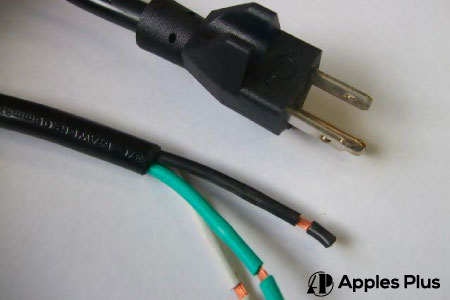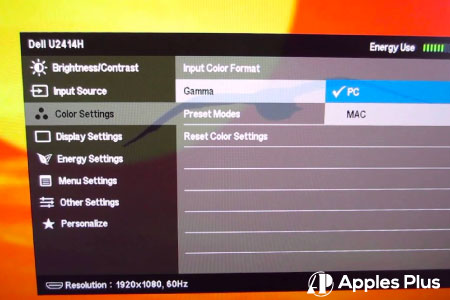Dell monitors are known for their quality and reliability, but sometimes users may encounter issues with their monitor not turning on.
This can be a frustrating experience, especially when trying to work or use the computer. There are several reasons why a Dell monitor may not turn on, ranging from power issues to faulty cables or display settings.
In this blog post, we will explore some troubleshooting steps to help users diagnose and fix the issue of Dell monitors not turning on.
Why My Dell Monitor Not Turning On?

There are several reasons why a Dell monitor may not turn on, including:
1. Power issues
Power issues are a common cause of Dell monitors not turning on. Here are some steps to troubleshoot power issues:

- Check the power cable: Ensure that the power cable is plugged in correctly and securely to the wall outlet and the monitor. Sometimes, the power cable may become loose or disconnected accidentally.
- Test the wall outlet: If the monitor still doesn’t turn on, try plugging another device into the same wall outlet to check if the outlet is functioning correctly.
- Check the power source: If the monitor is plugged into a surge protector or a power strip, ensure it receives power. Check if the surge protector or power strip is turned on and connected properly.
- Replace the power cable: If it is damaged, frayed, or not working correctly, try replacing it with a new one.
By checking the power source and the power cable, users can ensure that their Dell monitor receives power correctly and troubleshoot power-related issues effectively.
2. Faulty cables
Faulty cables are another common reason why Dell monitors may not turn on. Here are some steps to troubleshoot faulty cables:

- Check the cables: Inspect the cables connecting the monitor to the computer, including the power cable, VGA/HDMI/DVI cable, and USB cable. Look for any damage, frayed wires, or loose connections.
- Try a different cable: If the cables appear damaged, try replacing them with new ones to see if that resolves the issue.
- Ensure correct input selection: Make sure the correct input is selected on the monitor, depending on the type of cable being used.
- Test with another computer: If the monitor still doesn’t turn on, try connecting it to another computer with a different cable to check if the issue is with the computer or the cable.
By checking and replacing faulty cables, users can ensure that their Dell monitor receives the correct signals from the computer and troubleshoot cable-related issues effectively.
3. Display Settings
Display settings can also cause Dell monitors not to turn on. Here are some steps to troubleshoot display settings:

- Check the computer’s display settings: Ensure that the computer’s display settings are configured correctly. In Windows, go to “Settings” > “System” > “Display” and check the display settings. Make sure the monitor is detected and set as the primary display.
- Try a different connection: If the monitor still doesn’t turn on, try connecting it to a different port on the computer, or try an other type of cable (e.g., VGA instead of HDMI).
- Boot in safe mode: If the monitor works safely, it may be due to a driver or software issue. Try updating the graphics driver or reinstalling the graphics driver.
- Check for updates: Make sure the monitor firmware and driver are current. Dell provides updates for monitors on their website.
By checking and adjusting the display settings on the computer, users can ensure that the monitor is configured correctly and troubleshoot display-related issues effectively.
Why Dell Monitor Power On but No Display?
If Dell monitor power on but displays no image, it could be due to several reasons:
- The cable connecting the monitor to the computer may be damaged or loose, causing the monitor not to receive the signal properly.
- The monitor may not be set to the correct input source, depending on the type of cable used.
- The computer’s display settings may not be configured correctly, leading to the monitor not displaying any image.
- The graphics driver may need to be updated or installed correctly, leading to the monitor not displaying any image.
- There could be an issue with the monitor’s hardware, such as a faulty panel or backlight, causing it not to display any image.
To determine the cause of a Dell monitor displaying no image, users can try troubleshooting steps such as checking cables, adjusting input selection and display settings, updating drivers, and contacting Dell support for hardware issues.
Why My Dell Monitor Power Button Flashing?
If the power button on a Dell monitor is flashing, it could indicate a problem. Here are some possible reasons why the power button is flashing:
- The monitor may not receive enough power, causing the power button to flash and connecting the monitor to a different power outlet or using a different cable.
- A loose or damaged cable could be causing the power button to flash. Try checking the cables and ensuring they are connected properly.
- There could be an issue with the monitor’s hardware, such as a faulty panel or backlight, causing the power button to flash.
- Some Dell monitors may flash the power button during a firmware update. Check for any firmware updates for the monitor on Dell’s website.
If the flashing power button persists after checking the power and cables, it is recommended to contact Dell support for further assistance.
Why My Dell Monitor Power Light Blinking White?
If the power light on a Dell monitor is blinking white, it could indicate a problem. Here are some possible reasons why the power light is blinking white:
- The monitor may not receive enough power, causing the light to blink and connecting the monitor to a different power outlet or using a different cable.
- A loose or damaged cable could be causing the power light to blink. Try checking the cables and ensuring they are connected properly.
- There could be an issue with the monitor’s hardware, such as a faulty panel or backlight, causing the power light to blink.
- Some Dell monitors may blink the power light during a firmware update. Check for any firmware updates for the monitor on Dell’s website.
- The monitor may be in sleep mode. Try pressing a button on the keyboard or moving the mouse to wake the monitor.
If the blinking power light persists after checking the power and cables, it is recommended to contact Dell support for further assistance.
Why My Dell Monitor Power Button Flashing Green?
A flashing green power button on a Dell monitor can indicate several issues, including:
- If your Dell monitor has been idle for a certain period, it may enter power saving mode, where the power button flashes to indicate it is in standby mode.
- The flashing green power button may also indicate that the monitor is not receiving a signal from the computer or other connected device. Check your cables and ensure they are properly connected to the monitor and computer.
- A flashing green power button could also indicate that the monitor has a hardware malfunction or has reached the end of its lifespan. In this case, try resetting the monitor by unplugging it from the power source and then plugging it back in after a few seconds.
Conclusion
In conclusion, a Dell monitors not turning on can be a frustrating experience, but there are several potential causes and solutions to try.
Common causes of a non-responsive monitor include power supply issues, loose cables, or hardware malfunctions. Troubleshooting steps include checking power connections, resetting the monitor, and checking for input signal issues.
If these steps do not resolve the problem, contacting Dell support or seeking professional assistance may be necessary. By following these steps, you can increase the chances of getting your Dell monitor up and running again.

Meet Harry, the author of Apples Plus! Harry is a highly skilled electronic engineer passionate about testing and reviewing tech products like monitors and soundbars. With years of experience in the industry, Harry has developed a keen eye for detail and an in-depth understanding of the latest tech trends and developments.


